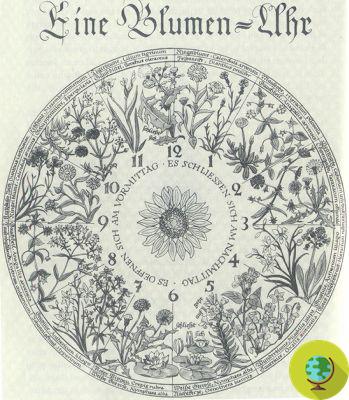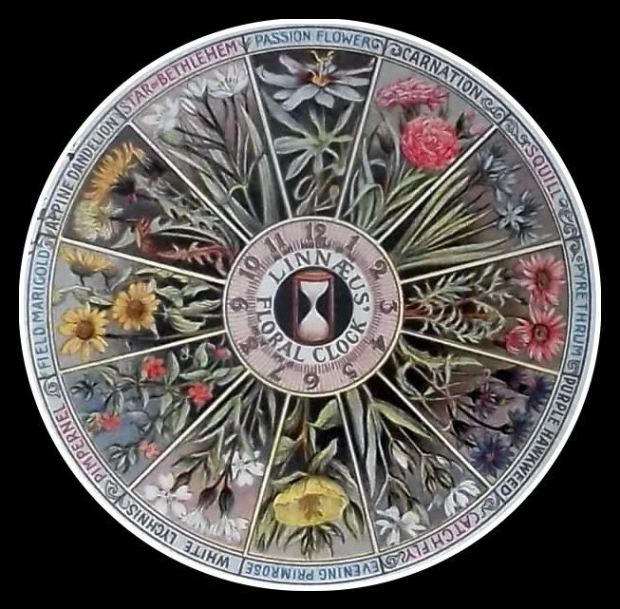Plants have many strategies in place, including deciding when to open flowers during the day. Linnaeus already knew this when he developed the flower clock
Why do plants open flowers at different times? And based on these times, is it possible to mark the time? This is what this botanist tried to do as early as the eighteenth century.
Plants employ numerous strategies to ensure their survival and to ensure that their reproduction is successful. One of these strategies is to decide at what time of day to open your flowers. Taking advantage of the different times in which the plants open the corollas, Linnaeus has elaborated a floral clock: a magnificent project, almost impossible to reproduce in reality.
Because the opening of the flowers takes place at different times

I fiori are very important for the conservation of the species, because thanks to the wind, water and insects they allow the dispersion of pollen: if thepollination is successful, a fruit will develop which will contain the seeds necessary for the germination of a new plant individual.
Plants that exploitentomophilic pollination - that is mediated by insects - they invest a lot of energy to attract hymenoptera and lepidoptera through the production of nectar and fragrant and colored molecules, which serve to make bees, bumblebees, moths and butterflies capitulate among the corollas.
However, for a flower it is also very important to be able to outperform the competition of other flowers. Because of this, the corollas do not all open at the same time or for the same time: some plants produce flowers that remain open day and night, others open their flowers only during the day or only at night, still others show their corollas only for a few hours of the day or night.
The cornflower, for example, opens its blue flowers between four and eight in the morning, while the Beauty at night shows its colorful corollas only at night, as the name suggests.
Each plant therefore decides when it is best to show their flowers to ensure they are pollinated: the various species avoid keeping their flowers open at the same time to have fewer opponents to contend with insects.
Linnaeus' floral clock

By taking advantage of the feature of asynchronous opening of the corollas, we might even achieve some sort of floral clock and try to reproduce it in our gardens.
It would not be an original idea, because he has already thought about it Linnaeus in the XNUMXth century. Carl Nilsson Linnaeus, Swedish botanist known as the father of taxonomy, closely studied the phenomenon of the opening of flowers on the field, in a botanical garden.
After ten years of observations, he drew one list of forty-six plants noting the time the species opened their flowers. He organized the various plants in sequence according to the opening hours of the corollas and thus built a kind of l'flower clock.
Later there were many who tried to reproduce Linnaeus' work in the gardens, planting the species in order of opening hours of the flowers. The project to build a flower clock in reality was not very successful, as it did not take into account the length of the day that varies from one area of the Earth to another.
Linnaeus has indeed recorded data on blooms in Uppsala, Sweden: by moving plants to another latitude, the opening hours of the flowers would change, as plant species are sensitive to any environmental variation, to which they respond accordingly.
The plants in fact they are equipped with a system called phytochrome which allows them to perceive light and understand when the sun rises and when it sets: with varying hours of light, changes the moment in which the corolla will open in the sun, ready to welcome pollinating insects.
It is not just the light that makes a flower decide when to show itself in all its beauty: opening times also vary according to temperature and humidity.
Linnaeus' project, however, offered scholars the opportunity to understand one of the many mechanisms implemented by plants, magnificent organisms that deserve all our respect.
To find out more, consult the original manuscript
On flowers you might also be interested in:
- Flowers hear us! They listen to the buzz of bees and make the nectar sweeter
- The petals of this flower look like little hummingbirds
- The spectacular flowering of Castelluccio di Norcia: whoever goes to see it does not step on the flowers
- Sicily like Holland. In Blufi the marvelous spontaneous tulips bloom that paint the Madonie red
Tatiana Maselli


























